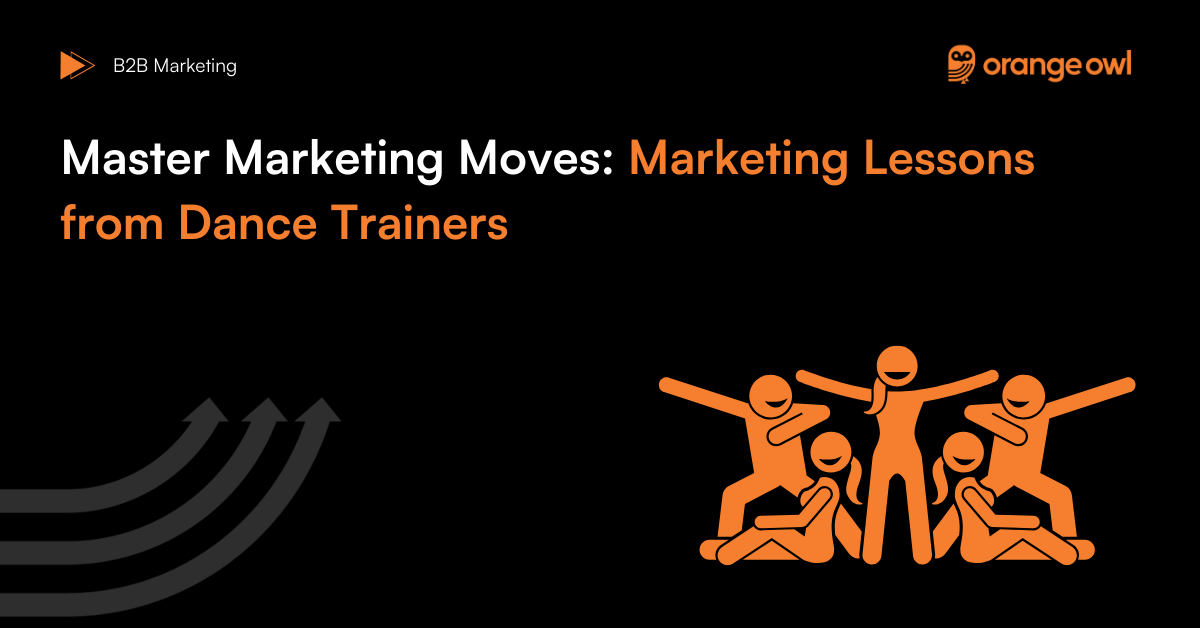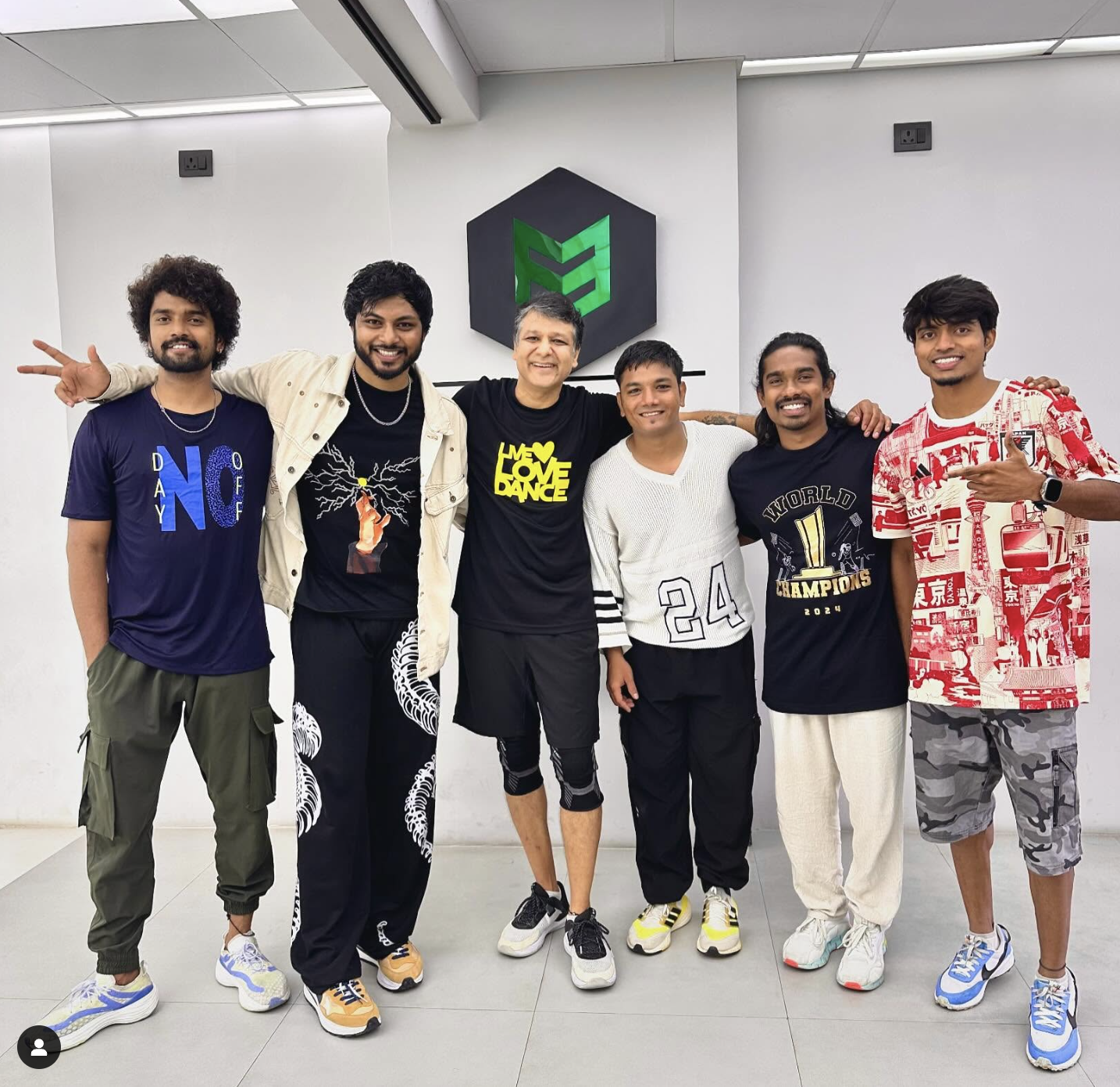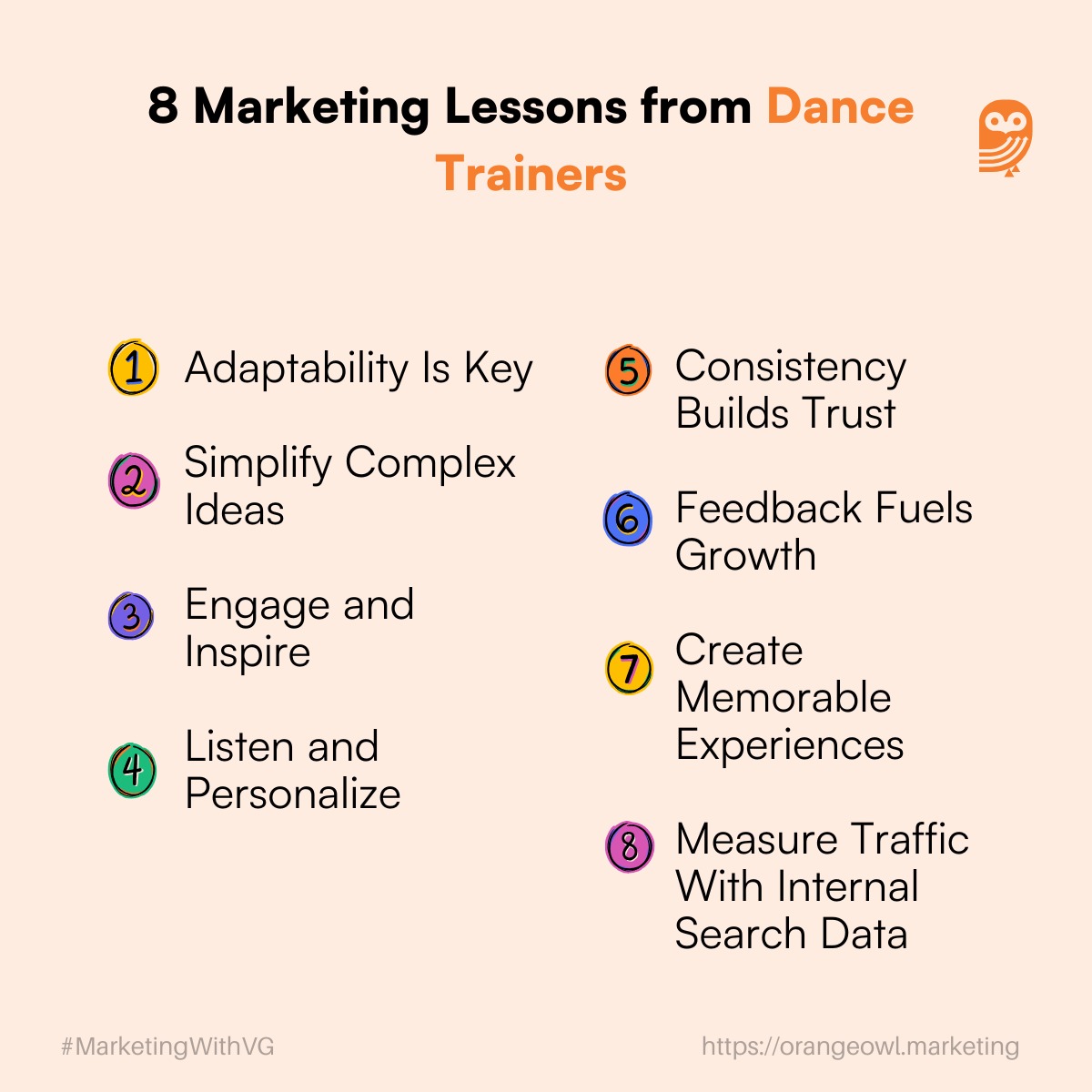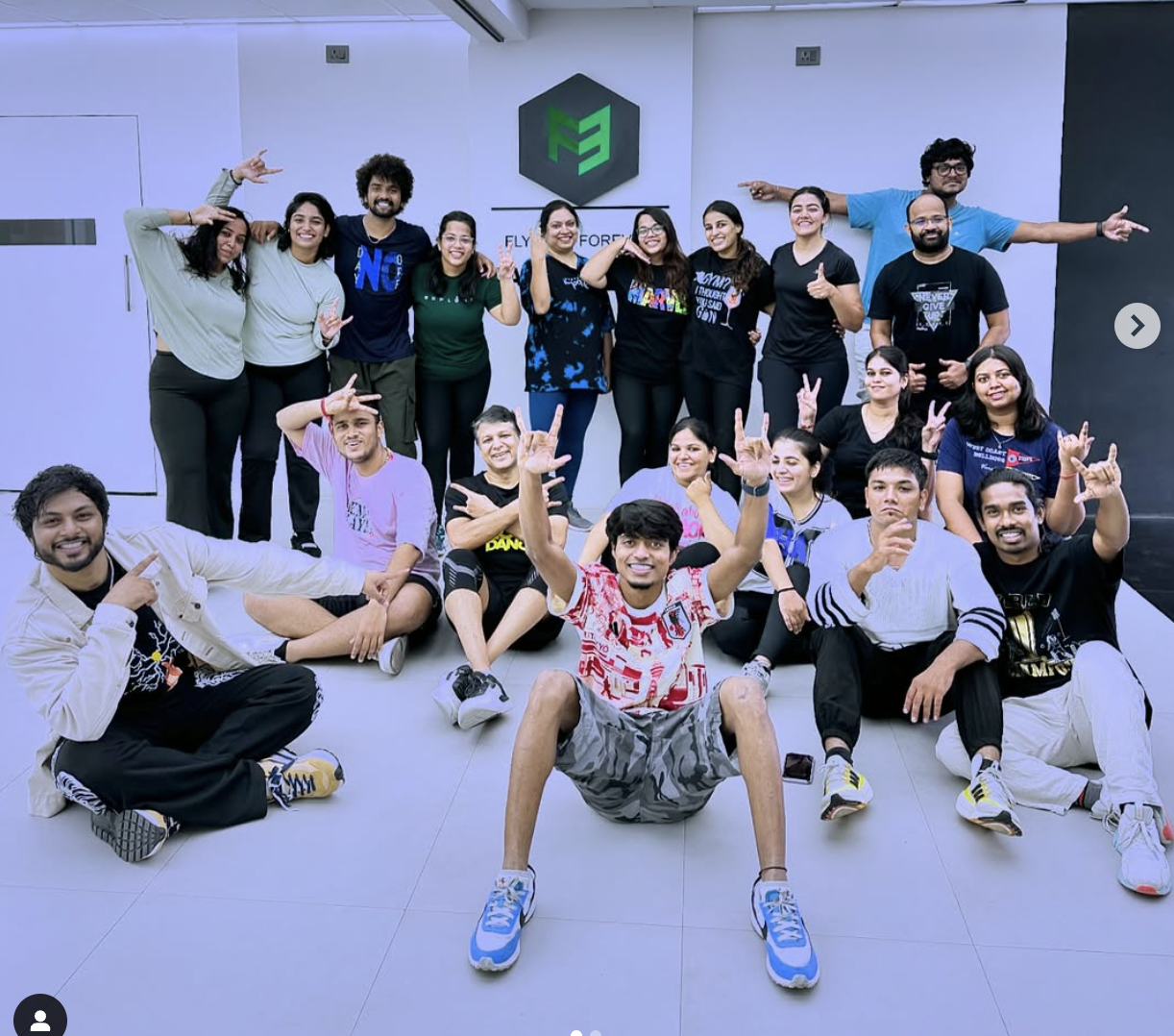Master Marketing Moves: 8 Marketing Lessons from Dance Trainers
Vivek Goel
December 19, 2024

Table of Contents
Introduction
My whole world seems to revolve around two passions: marketing and fitness—particularly dance. When I’m not strategizing for a marketing campaign, you’ll often find me in a group workout or a dance class at Cult. Add my love for travel, and you’ll understand why I’m always looking for connections between seemingly unrelated experiences.
Over the past year and a half, I’ve observed how dance trainers operate—with unmatched energy, adaptability, and a constant focus on their “customers,” the class participants. Their ability to engage, inspire, and deliver value provides incredible marketing lessons from dance trainers that marketing teams and managers can learn from.
These trainers are not just teaching moves; they are building connections, creating memorable experiences, and adapting to their audience—skills that translate directly into the world of marketing. The more I reflect on it, the clearer it becomes that some of the most impactful marketing lessons from dance trainers come from their ability to connect deeply with their “audience.”
Here’s what I’ve observed and how it applies to marketing teams, complete with examples from both worlds.

8 Marketing Lessons from Dance Trainers
1. Adaptability Is Key
From the Dance Floor: A dance trainer steps into a class with a diverse set of participants—some seasoned, others complete beginners. They adjust their choreography on the spot, slowing down for newcomers or increasing intensity for advanced participants.
In Marketing:
Marketing managers must adapt strategies to suit different audiences, channels, and trends. For example, a B2B SaaS company might use in-depth whitepapers for tech-savvy decision-makers while creating simplified explainer videos for small-business owners.
Example:
A dance trainer notices half the class struggling with a fast-paced hip-hop routine and switches to simpler, repetitive moves while teaching key elements. Similarly, marketing managers at a cybersecurity firm could pivot a campaign mid-way, realizing their original email content isn’t resonating, and instead focus on short, relatable LinkedIn posts to engage their target audience.
“Every class is different, and so are the people. Adapting to their energy is the first step to creating a connection.”
– Akhil, Dance Trainer
2. Simplify Complex Ideas
From the Dance Floor: Dance trainers excel at breaking down complicated choreography into simple steps, teaching one move at a time until participants master the sequence.
In Marketing:
Marketers often deal with complex products or strategies. Breaking down these ideas into digestible content ensures the audience doesn’t feel overwhelmed. For example, a data analytics platform could create a step-by-step demo video to explain how its dashboard works.
Example:
A dance trainer teaching salsa begins with footwork before adding arm movements. Similarly, a marketing team at a cloud storage company could introduce a new feature by first explaining its benefits in simple terms, followed by a detailed tutorial.
“The key is to break it down—one move, one beat at a time. Simplicity builds confidence.”
– Ankita, Dance Trainer
3. Engage and Inspire
From the Dance Floor: Dance trainers use music, energy, and positive reinforcement to keep participants motivated and excited. A class filled with engagement leaves people wanting to return.
In Marketing:
Marketing campaigns must inspire and engage audiences to build loyalty. For example, a sustainability-focused company could run an Instagram campaign featuring customers sharing how they use eco-friendly products in their daily lives.
Example:
A Zumba trainer creates a playlist with trending songs to keep the class energized and connected. In the same way, a B2B marketing team at an HR tech company could host webinars where existing clients share how the software has streamlined their HR processes, building trust and engagement.
“Energy is contagious. When I bring my best, it pushes others to do the same.”
– Pranay, Dance Trainer
4. Listen and Personalize
From the Dance Floor: A dance trainer constantly gauges the mood and energy of the class, adjusting the routine or playlist based on feedback.
In Marketing:
Personalization is key to connecting with your audience. For example, an email campaign can be tailored to address different customer pain points based on previous interactions.
Example:
A dance trainer notices participants preferring upbeat Bollywood songs over western pop and adjusts the playlist accordingly. Similarly, a B2B SaaS company could personalize its email marketing by segmenting its list into small-business owners, mid-sized companies, and enterprises, crafting unique messages for each group.
“I ask, I observe, and I adjust. A playlist or routine that feels personal can transform the whole experience.”
– Shubhra, Dance Trainer

5. Consistency Builds Trust
From the Dance Floor: Participants trust trainers who consistently bring energy, enthusiasm, and quality to every session.
In Marketing:
A consistent brand voice and messaging across channels build trust over time. For instance, a company offering remote collaboration tools must ensure its messaging across social media, email, and website aligns with its promise of seamless teamwork.
Example:
A trainer who always starts class on time and maintains a consistent teaching style builds loyalty among members. In the same vein, a marketing team at a project management software company could ensure all customer touchpoints—from ads to onboarding—reflect the same promise of simplicity and efficiency.
“Show up every day with the same passion. Consistency makes people feel they can rely on you.”
– Prem, Dance Trainer
6. Feedback Fuels Growth
From the Dance Floor: Trainers actively seek feedback from participants to refine their routines and create better experiences.
In Marketing:
Customer feedback is invaluable for refining strategies and campaigns. For example, a SaaS company might survey customers to improve product features or onboarding experiences.
Example:
A dance trainer adds a cooldown routine after multiple participants request it. Similarly, a B2B fintech company could revamp its onboarding emails based on customer feedback that they are too lengthy, making them more concise and engaging.
“I listen to their struggles and wins. Feedback isn’t just for them—it’s for me to grow, too.”
– Nihal Jaan, Dance Trainer
7. Create Memorable Experiences
From the Dance Floor: The best dance trainers don’t just teach—they create an experience. Their classes are fun, dynamic, and leave participants feeling accomplished.
In Marketing:
Campaigns that evoke emotion and create memorable moments lead to long-term brand recall. For instance, a campaign that surprises customers with exclusive benefits or events can make a lasting impression.
Example:
A trainer ends a class with an impromptu dance battle that leaves everyone smiling. Similarly, a B2B company hosting a surprise Q&A session with an industry expert for its loyal clients creates a memorable experience.
“It’s not just about steps; it’s about creating a vibe that they’ll remember long after the class is over.”
– Kriti Rajvansh, Dance Trainer
8. Energy and Passion Drive Success
From the Dance Floor: A trainer’s passion for dance is contagious, lifting the energy of the entire class.
In Marketing:
Marketing managers who approach campaigns with enthusiasm can inspire their teams and connect with their audiences.
Example:
A dance trainer who dances with genuine joy inspires participants to push harder. Similarly, a marketing manager launching a bold, innovative campaign for a tech startup energizes their team and captures the audience’s attention.
“When I dance with passion, it’s like a chain reaction—everyone feels it, and the whole room transforms.”
– Shashank Deshpande, Dance Trainer

Conclusion: Marketing Is a Dance of Its Own
Marketing and dance may seem unrelated, but they share core principles—adaptability, creativity, and engagement. Dance trainers inspire through their passion and connection with participants, and marketing lessons from dance trainers offer powerful insights that marketing teams can apply to resonate with their audience.
Whether it’s simplifying complex ideas, listening to feedback, or creating memorable experiences, the marketing lessons from dance trainers demonstrate how to build strategies that truly connect with people. Just as dance is about forging connections through rhythm, marketing is about creating meaningful relationships with customers.
What unique experiences inspire your marketing approach? Share your thoughts below—I’d love to hear your story!
Frequently Asked Questions on Marketing Lessons from Dance Trainers
Dance trainers continuously innovate to keep their routines fresh and engaging, blending different styles and moves to create a unique experience. Marketers can draw inspiration from this by experimenting with new ideas and strategies, whether it’s through creative ad campaigns, unique storytelling, or exploring untapped channels. Just like a dance trainer fuses salsa with contemporary moves to surprise participants, a marketer might blend traditional and digital tactics to craft an unexpected, memorable campaign.
A dance trainer often faces a class with varying skill levels—from beginners to advanced dancers. They modify their routines on the spot, ensuring every participant feels included and challenged. Marketers can adopt this approach by segmenting their target audience into smaller groups based on demographics, preferences, or buying behaviors. Tailoring marketing messages to suit these segments—such as personalized email content or custom ad campaigns—ensures maximum engagement and relevance, just as a trainer ensures everyone in their class is comfortable and motivated.
The energy a dance trainer brings to a class is contagious—it motivates participants to push harder and enjoy the session. Similarly, the enthusiasm of a marketing team can inspire creativity, foster collaboration, and captivate audiences. A high-energy product launch campaign or an upbeat video ad can excite potential customers, creating buzz and anticipation. Just as a trainer’s energy sets the tone for a class, a marketer’s energy can set the tone for a campaign’s success.
Dance trainers constantly observe their participants and adjust routines based on their responses, ensuring a better experience. Marketers, too, must actively seek feedback from their audience, whether through surveys, reviews, or data analytics. For example, if a campaign isn’t performing as expected, customer feedback can help identify pain points, allowing marketers to tweak their messaging or delivery. Just as a trainer refines their class based on participant needs, marketers can refine campaigns for greater impact and resonance.
Consistency in a dance trainer’s teaching style, energy, and commitment builds trust among their participants, making them return for more. Similarly, marketers can cultivate loyalty by maintaining a consistent brand message, delivering on promises, and providing high-quality, reliable experiences. For example, a brand that consistently offers excellent customer service and transparent communication will naturally build a loyal customer base, much like a dependable dance trainer earns the trust of their class.
Dance trainers use music, encouraging words, and interactive elements to keep their classes lively and participants engaged. Marketers can replicate this by incorporating engaging elements into their campaigns, such as interactive quizzes, user-generated content, or social media contests. Just like a dance trainer encourages participants to share their dance videos online, a brand could ask customers to share their experiences with a product, fostering a sense of community and participation.
A dance trainer often breaks down intricate routines into manageable steps, ensuring everyone can follow along. Marketers can take a similar approach by simplifying their messaging, especially when dealing with complex products or services. For instance, instead of overwhelming potential customers with technical jargon, a brand could create a series of simple explainer videos or use relatable analogies to convey their product’s value. This ensures the audience understands the message and feels confident in engaging further.
The passion of a dance trainer for their craft inspires participants to stay motivated and committed. Similarly, marketers who display genuine enthusiasm for their products or services can build stronger connections with their audience. For example, a company showcasing behind-the-scenes stories of how their team is passionate about solving customer problems can humanize the brand and inspire trust, just as a trainer’s love for dance inspires their class to keep coming back.
Dance trainers go beyond teaching steps—they create an atmosphere of joy and connection, leaving participants with a sense of accomplishment. Marketers can take inspiration by designing campaigns that evoke strong emotions or offer unique experiences. For instance, hosting surprise events, running interactive challenges, or celebrating customer milestones can create lasting memories. A memorable experience builds a stronger emotional connection to the brand, just as an unforgettable dance class makes participants look forward to the next session.
Dance trainers often adjust their routines mid-class based on the participants’ energy and responses. In the same way, marketers must remain flexible and adapt their strategies to stay aligned with market trends and customer expectations. For instance, if a campaign aimed at Gen Z isn’t gaining traction on Instagram, a marketer might shift focus to TikTok, where the demographic is more active. Just as a trainer thrives on flexibility, marketers who embrace adaptability can respond quickly to changes and seize new opportunities.


